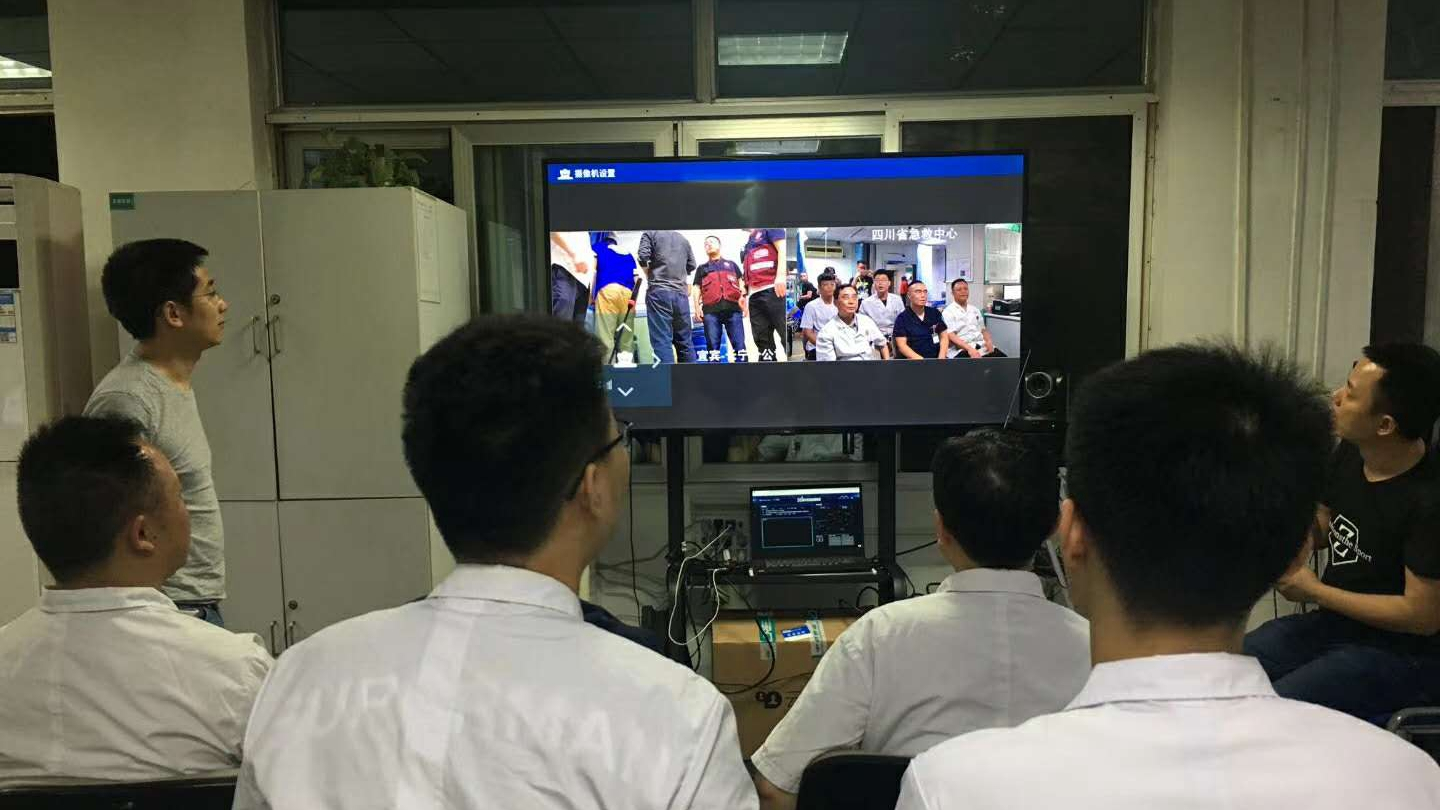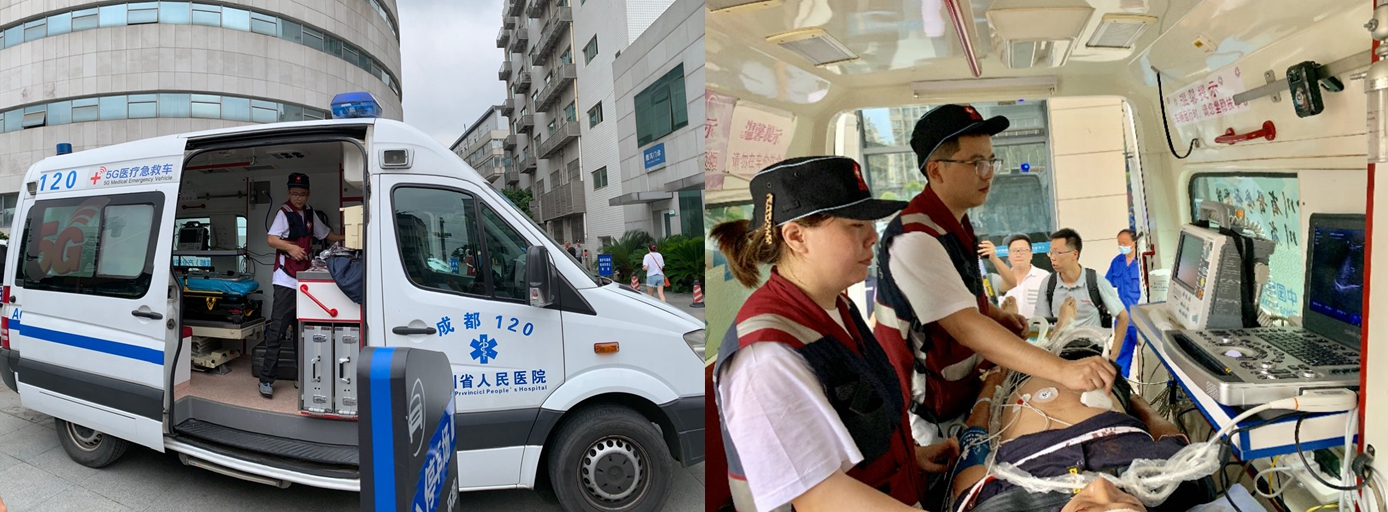

For the first time, hospitals in southwest China have used 5G technology in disaster medical rescue. This historic medical practice, made on Tuesday, came one day after a 6.0-magnitude earthquake hit Changning County in southwest China's Sichuan Province. The disaster has so far killed 13 people and injured over 200.
At around 9:30 p.m. on Tuesday, a panel of medical experts from Sichuan Provincial People’s Hospital gathered at an emergency rescue room for a real-time remote consultation. Using newly-equipped 5G technology, they worked together to identify the symptoms suffered by a patient from Changning TCM Hospital, located right in the epicenter.
The patient was suspected of having a ruptured spleen after escaping from the destructive tremor. Luckily, the patient was soon cleared.
Jiang Hua, a senior disaster rescue expert at the provincial hospital, was among the panelists of the consultation. He told CGTN that 5G technology plays a pivotal role during the whole process. This also proves that 5G works well in practice, instead of in experiments like what they did before.
Earlier in the afternoon, medical experts at the same hospital attempted to use 5G technology to identify a liver-ruptured patient from the quake zone. However, the attempt failed as the signal transmission was affected by the quake.
Then, after a another try, medical staff were able to get B-ultrasound images of the patients right in time and detected large quantity of accumulated blood in the abdomen. The patient was then sent to the provincial hospital aboard a helicopter for further treatment. So far, he’s been in a stable condition.
Commenting on that attempt, Zeng Jun, vice president of Sichuan Provincial People’s Hospital, said, this for a large part, owes thanks to the high-efficiency and low latency features of 5G transmission. He told CGTN the hospital’s try heralds a new era of disaster medical rescue in China and beyond.

Sichuan Provincial People's Hospital‘s 5G-connected ambulance. /CGTN Photo
According to Zeng, his hospital was equipped with 5G-based medical equipment, including an ambulance, more than a month ago. But this was the first time they were put into medical practice.
The 5G emergency rescue system is integrated with cutting-edge technologies, including artificial intelligence (AI), augmented reality (AR), and virtual reality (VR). A series of tests can be conducted in an ambulance, such as blood test, electrocardiogram, and medical ultrasound. With 5G technology, test results and patient information can be transferred back to the hospital in real time, speeding up their diagnosis and treatment.
(Top image: Doctors from Sichuan Provincial People's Hospital in real-time remote medical consultation with a suspected spleen rupture patient in quake-hit Changning County, also in the southwestern Chinese province. /CGTN Photo)

Copyright © 2018 CGTN. Beijing ICP prepared NO.16065310-3
Copyright © 2018 CGTN. Beijing ICP prepared NO.16065310-3